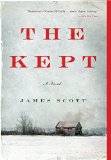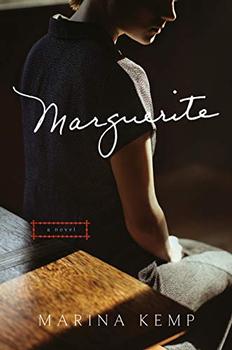Summary | Excerpt | Reviews | Beyond the book | Read-Alikes | Genres & Themes | Author Bio

At the beginning of his debut novel The Kept, one of James Scott's main characters, Elspeth Howell, is described as a sinner whose multitude of transgressions involve anger, covetousness and thievery. The events leading up to her sinfulness, along with the consequences of her evil deeds, are the driving forces behind this suspenseful tale.
Scott's sharp eye for detail and strong sense of place are amply employed in this work, which shrewdly borrows from many Southern Gothic traditions - particularly bleak settings; violence; and eccentric, flawed characters. New York, near the end of the 19th century, is the potently grim setting. With this eastern locale, Scott infuses the genre with finely crafted sentences and scenes that by turns are disturbing, poignant, creepy, and sometimes delightfully bizarre.
As the book opens, Elspeth has been away from her family and farmhouse for four months, working as a midwife. She arrives home on a cold winter day and discovers that her husband and four of her five children have been brutally murdered. While Elspeth, shocked and sickened with grief, straightens the dress of one of her dead daughters, Caleb shoots his mother through the pantry door, believing with his blinded view that at least one of the three killers has returned, days after committing the carnage.
When Caleb realizes his mistake, he is horrified and overcome with guilt, a continual theme in this story. Relieved that his mother is alive, he tends to her care, all the while allowing her to think that one of the intruders shot her. Both mother and son become determined to exact revenge. Although Elspeth's wounds are far from healed, she and Caleb soon set out in the frigid wilderness, following the killers' footprints, "their trail in the snow like a long snake of guilt, winding its evil way into and out of their house."
Mainly through flashbacks interspersed early on and for most of the novel (with mixed results, a point to be covered later), we learn that Elspeth has a past that still haunts her. These secrets are gradually revealed to Caleb as the story unfolds. Just as a hint, however, it's fair to say that Elspeth is a deeply troubled woman.
On the snow-covered trail, a man tells Elspeth and Caleb about a place called the Elm Inn, which turns out to be a brothel built on stilts. For a while, unbeknownst to his mother, Caleb keeps returning to the Elm, convinced it is "indeed a home for killers," specifically the men he wants to track down. Caleb gets a job at the inn of ill repute, sweeping and cleaning, and earns enough money to buy a pistol. Brawl scenes play out and often convey the feel of a western, with plenty of colorful—and violent—characters, including the inn owner, London White, and another mysterious man named Martin Shane. With time, Caleb learns he and Shane have a surprising connection.
Meanwhile, to earn money while she and her son continue their search for the killers, Elspeth gets a job in the ice trade (see 'Beyond the Book') and forges a complicated friendship with a male worker. Soul-baring confessions and revelations ensue, and lead to a nail-biting conclusion.
Throughout, there are several direct and implied references to the Bible, religiosity, God and the Devil, evil and goodness, retribution, atonement and redemption. With Caleb, especially, Scott captures his young character's kind yet profoundly damaged soul. A particularly moving section depicts the boy's love—and anguish—for his horses and other farm animals he knows he must leave in order to find the murderers. The book tends to be overly ambitious, however, with its inclusion of so many colossal subjects and themes that sometimes compete for attention in a work chock-full of plots and characters.
Regarding the flashbacks mentioned earlier: Though these passages—comprised mainly of Caleb's and Elspeth's past experiences and reflections—add to the understanding of their characters, they come across in a few too many spots as misplaced or superfluous, thereby hindering the flow of the narrative.
Nonetheless, The Kept has much to offer, especially for readers who enjoy stories set in earlier time periods, written with vivid descriptions and intricate plots that twist and turn until the final page.
![]() This review was originally published in The BookBrowse Review in January 2014, and has been updated for the
January 2015 edition.
Click here to go to this issue.
This review was originally published in The BookBrowse Review in January 2014, and has been updated for the
January 2015 edition.
Click here to go to this issue.

If you liked The Kept, try these:

by Marina Kemp
Published 2020
In this haunting novel, a young nurse forms an unlikely connection with the elderly man she cares for, and finds herself confronting the guilt she carries from her past.

by Caleb Johnson
Published 2019
Treeborne is a celebration and a reminder: of how the past gets mixed up in thoughts of the future; of how home is a story as much as a place.
Your guide toexceptional books
BookBrowse seeks out and recommends the best in contemporary fiction and nonfiction—books that not only engage and entertain but also deepen our understanding of ourselves and the world around us.